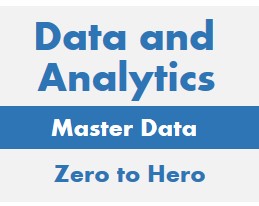


Data is a valuable organization asset, however it can go to waste withuut effective management. Lack of effective management is a major reason that Data And Analytics (DAA) projects. Data Governance (DG), the overall management of data and information, is the answer. It includes
A step by step approach is an effective way to establish a data governance program. In many ways, data governance is about managing change. It involves setting standards, determining policies and deciding on technologies that impact enterpriselevel data management. The steps of data governance are outlined below. Data Governance is an iterative process, where data governance reaches new levels of maturity over time.

Infogoal.com is organized to help you gain mastery.
Examples may be simplified to facilitate learning.
Content is reviewed for errors but is not warranted to be 100% correct.
In order to use this site, you must read and agree to the
terms of use, privacy policy and cookie policy.
Copyright 2006-2020 by Infogoal, LLC. All Rights Reserved.
